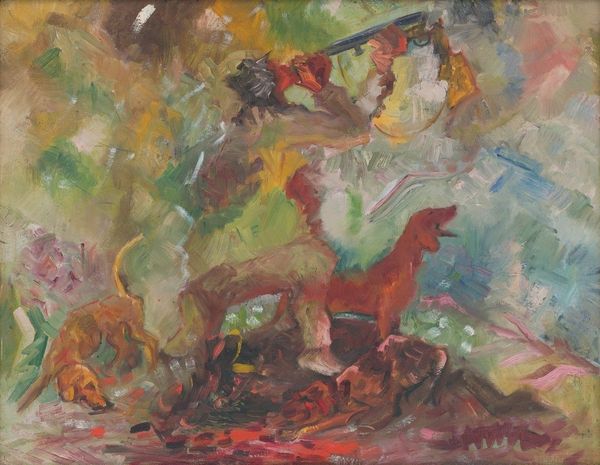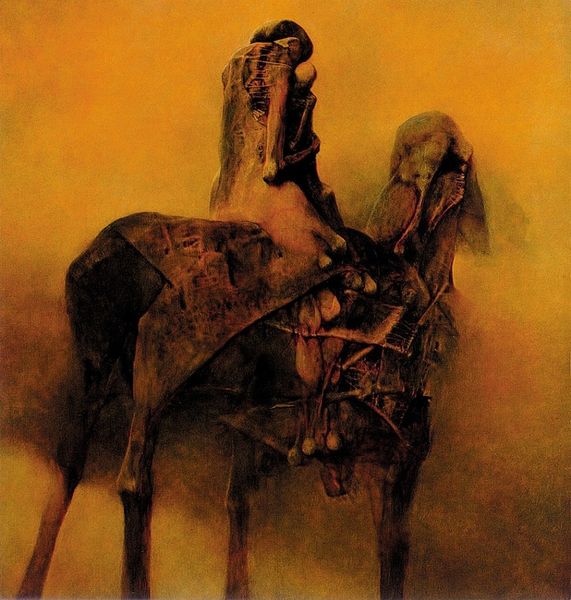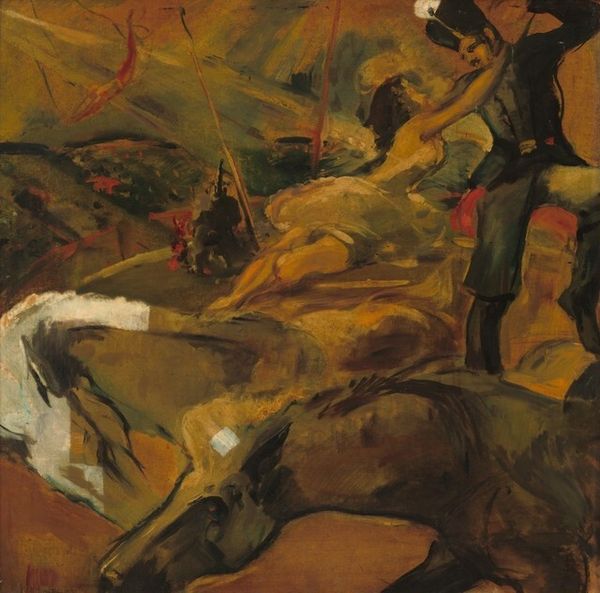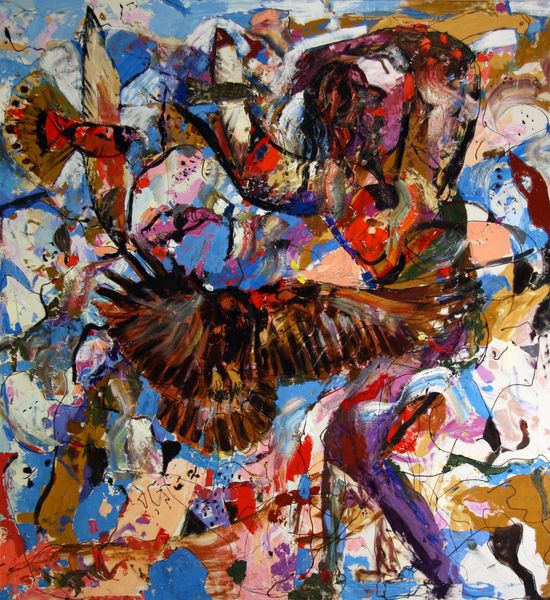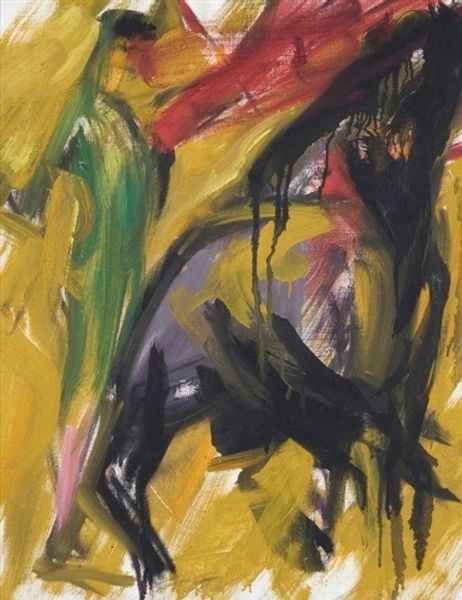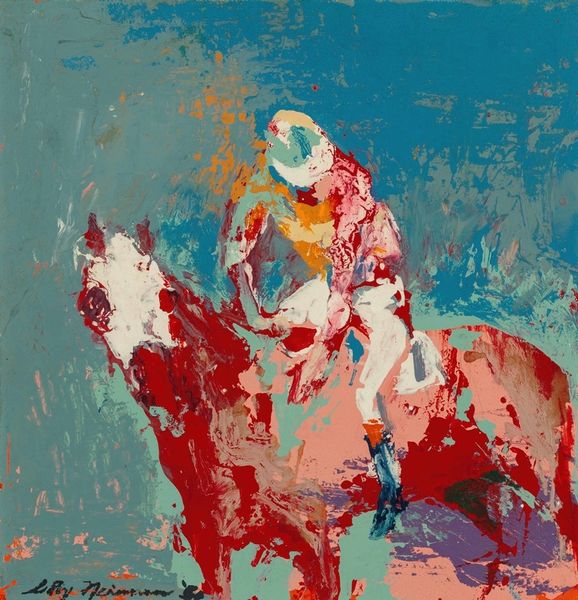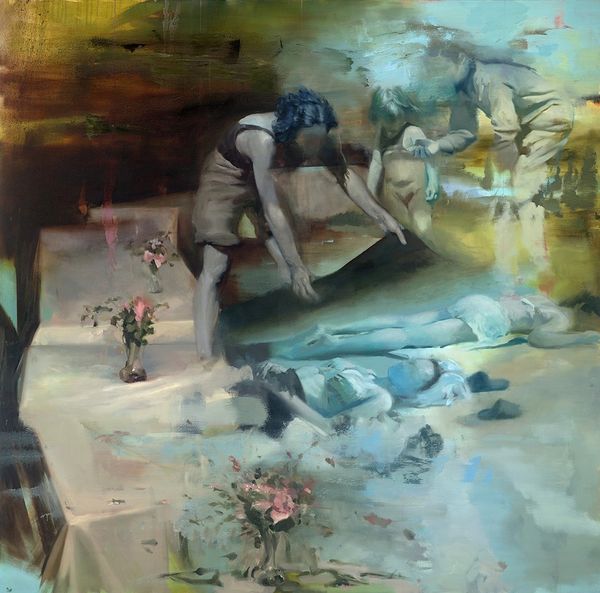
painting, plein-air, oil-paint
#
animal
#
painting
#
impressionism
#
plein-air
#
oil-paint
#
landscape
#
impressionist landscape
#
figuration
#
possibly oil pastel
#
oil painting
Copyright: Public Domain: Artvee
Curator: This is Henri de Toulouse-Lautrec's "Cheval de chasse à courre," painted circa 1880. He renders the scene en plein air with oil paint. What's your initial read of this artwork? Editor: Immediate impression: a subdued intensity. The dark palette, dominated by greens and browns, conveys a sense of being in the thick of nature. You can almost smell the damp earth, but there’s a restless energy contained within. Curator: It is interesting you note that. Semiotically speaking, the rapid brushstrokes and broken color certainly activate that restless, fleeting energy you speak of. We also have some sense of his exposure to the Impressionist doctrine that called for observing color and tone. Editor: Yes, the handling of the material really lends itself to this interpretation. Look closely, and you realize how crucial the visceral application of paint is to expressing that dynamism. One can feel Lautrec’s physical engagement with the canvas. How do you consider its contribution to impressionism and the depiction of equestrian life? Curator: One has to consider how he is grappling with representation; The flattened perspective, which could be seen as derivative, perhaps intentionally nods at Impressionistic landscape strategies while offering a sense of spatial ambiguity, emphasizing surface over illusionism. Editor: I find that interpretation very appealing, however, I see it slightly differently; The depiction reflects the grueling work often dismissed from high art that occurs out of sight—the physical labor required of horses and jockeys to allow such opulent scenes. The raw application of paint echoes the strenuous, demanding aspect of these jobs. It challenges established norms. Curator: Well, by disrupting those norms, it provokes discourse and offers insight. It is certainly a vital articulation in our understandings. Thank you. Editor: I am grateful we had this discussion, this approach to production does make us wonder what Lautrec wished to emphasize!
Comments
No comments
Be the first to comment and join the conversation on the ultimate creative platform.
